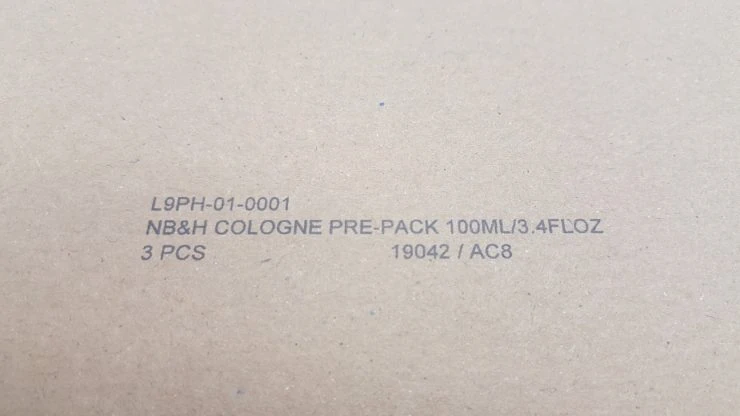A candle manufacturer has boosted its ability to meet growing demand for its premium products by swapping messy and inflexible old coding systems for four clean and flexible, low-maintenance thermal inkjet (TIJ) printers from Rotech.
The company produces a range of hand-poured, premium scented candles and currently operate twelve lines across their sites in the UK.
The new printers are located at one of their sites, where each line manufactures around 4,000 candles per day, although this varies considerably day-to-day depending on orders. Keeping track of the many different batches and their destinations is critical to the business.
Previously, the shipping carton containing the candles were marked using a continuous inkjet (CIJ) printer which added product description, batch number and number of pieces in each shipping unit to the case. Coding was carried out at an offline coding station using the CIJ in conjunction with a Rotech RF1 carton feeder. Marking up individual display cartons with batch numbers required the hand application of a system of pre-printed, transparent labels.
“As a company we’re growing rapidly. We’re being pushed quite hard to improve our efficiency but we have to stay really strongly focused on quality. We wanted to improve our efficiency by moving to an inline coding system that could reduce the double handling of products,” explains the Operational Support Manager. “In addition, the CIJ printer was messy, difficult to set up and gave us a lot of downtime problems. In contrast, the cartridges for the new TIJ printers from Rotech just click into place and you’re off.”
There are four new systems in all. One is a direct replacement for the old CIJ system and works with the existing RF1 feeder to print information onto the outer, shipping cartons before they’re erected. The other three are used to mark-up the smart display cartons around individual candles. Each of these three printers is mounted on a portable frame, which enables operators to move them between different positions on a production line, as well as between different lines. Their compact size enables them to fit wherever they are needed and the clean, cartridge-based TIJ system means that no routine maintenance is required.
“The brackets enable us to move the printers from line-to-line or to different positions on the line for maximum flexibility,” he says. “They can print on the side or the end of a display carton and move around easily to suit different jobs.”
Several of the other production operations are carried out by hand, which means that the lines move at a relatively modest speed of three metres per second. That’s well within the capabilities of the Rotech TIJ systems. Crucially, the high quality of the resulting print doesn’t detract from the character of the luxury-branded display cartons and it’s easy to adjust the characters in terms of size, position and font. “The quality of the print is very good and it’s easy to adjust everything to get it perfect,” He adds.
The systems have only been in use for a few weeks so far, making it too early to put a figure on longer-term cost savings. However, the practical benefits in terms of flexibility, print quality, reduced downtime and maintenance have proved to be so obvious that the manufacturer has already ordered two more TIJ systems from Rotech.
If you have a similar application or require any further information or advice about printing onto luxury packaging, contact us.

